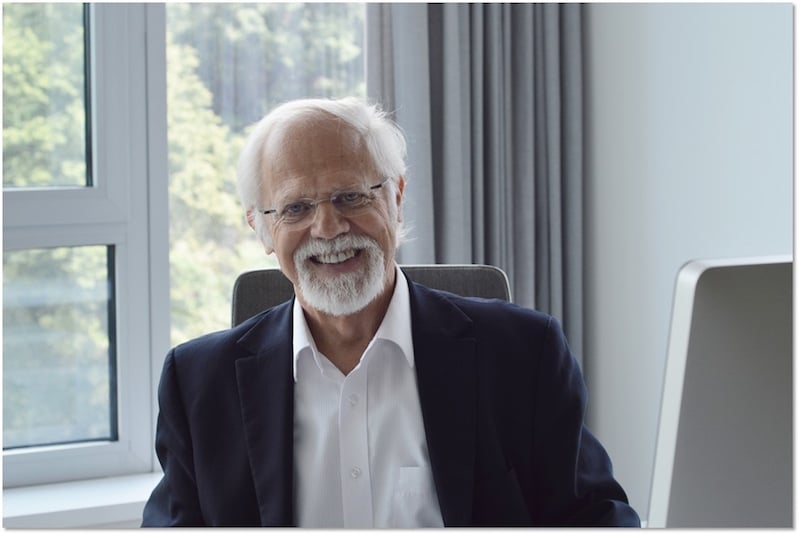For decades, Alzheimer’s disease research focused on a hypothesis that has increasingly been contested. A team of scientists in Slovakia has been swimming against the tide since the beginning, going for an alternative approach that has only recently started gaining recognition.
Research in Alzheimer’s disease has recently been plagued by intense disappointment. For over 25 years, the majority of scientists pursued the so-called amyloid-beta hypothesis — the initially compelling idea that the key driver behind the disease is the accumulation of plaques of the amyloid-beta protein in the brain.
Billions of dollars were spent globally by the biopharma industry to develop therapies aimed at removing these plaques, in the hope that this would be sufficient to treat the disease. Despite promising early results, late-stage trials of amyloid-targeting drugs from industry giants including Biogen, Merck, Eli Lilly, Pfizer, and Roche were dismal failures across the board.
Meanwhile, a select few set their sights on a different target entirely: a small protein called tau. Under normal conditions, tau plays a variety of important roles in the brain including stabilizing the microtubules of neurons. In the brains of Alzheimer’s patients, however, tau is known to aggregate and form ‘neurofibrillary tangles’, which are considered a key marker of the disease.
Targeting the tau protein is the premise behind Axon Neuroscience, a Slovakian biotech company founded by Michal Novak, who has been researching this molecule since the 1980s.
“Our founder, Professor Michal Novak, was involved with the initial discovery of the impact of the tau protein on Alzheimer’s development at the Laboratory of Molecular Biology, MRC, in Cambridge, UK. We’ve held on to that thesis for all this time, even though the consensus was for amyloid-beta as being the main research subject for Alzheimer’s,” said Norbert Zilka, Chief Scientific Officer of Axon Neuroscience.
Novak proposed that there was a structural difference between the pathological form of the tau protein present in the brains of people with Alzheimer’s that was not found in healthy brains. “At the time, no one believed him because there was no information available about the structure of those proteins.”

There were studies as far back as 1991 pointing at the fact that tau aggregates were the main driver of cognitive decline in Alzheimer’s disease. According to Zilka, the data has increasingly shown that amyloid-beta aggregates may be a factor that influences the speed of the decline, but not the cause. Still, the general consensus was to stick with the amyloid hypothesis.
“Fifteen or 20 years ago, it was very difficult to publish some interesting data on tau protein in the most prestigious scientific journals because they generally preferred amyloid based research to tau,” Zilka explained. “For many of the really large companies staking so much on the amyloid hypothesis, there was so much money at stake that they had to keep going.”
Despite these obstacles, Novak returned to Bratislava and, in 1999, he founded Axon Neuroscience.
“Our first aim was to prove whether tau is really structurally modified in Alzheimer’s disease brains, so we performed a very extensive proteomic analysis of tau proteins in the brain of healthy subjects and also Alzheimer’s patients. We found that there is a striking difference between the tau proteins in these two groups,” Zilka explained.
The researchers discovered that, in individuals with Alzheimer’s, the tau protein lost its naturally flexible structure, taking on a more firm structure that makes it form aggregates, thus giving rise to the neurofibrillary tangles that were observed in the brain of the patients.
Identifying tau’s Achilles heel
“We’ve been swimming against the tide from the beginning because we thought that the most important target is not tau as such, but a small area of the protein,” said Zilka.
This area is where tau proteins interact with each other, forming aggregates. The team at Axon was able to identify it by developing an antibody that blocked the interaction between tau proteins by targeting that small region.
“We had identified the Achilles heel of the tau protein: the most vulnerable area responsible for pathological interaction between tau proteins.”
Based on this discovery, Axon started developing a vaccine that consisted in training the immune system to attack that specific area of the tau protein. The vaccine candidate is designed to be administered subcutaneously once per month for six months, followed by subsequent doses once every three months to keep the antibody levels high for a longer time period.

“In 2013 we started the first clinical trial on 30 patients suffering from mild to moderate Alzheimer’s disease,” said Zilka. “The final conclusion from that study was that the vaccine was safe and well-tolerated by patients. Also, we observed a very high immune response against the tau protein.”
“What was very important for us was that, by using this tau peptide for immunization, we were able to generate the antibodies that discriminate between the healthy and pathological tau proteins, and this is due to the differences in structure.”
While the pathological form of tau exposes the specific area that causes aggregation, this small region of the protein is hidden in its healthy form. That’s what allowed the antibodies generated thanks to the vaccine to attack harmful tau aggregates without affecting its healthy version.
Last year, the company concluded a phase II trial across eight European countries focusing on patients with mild forms of Alzheimer’s. “We tested the vaccine on 196 patients and we observed a very high antibody response despite the fact that these patients were basically older than 55 years.”
“We know from other vaccination studies that it’s a challenge to induce a robust antibody response in these elderly people. I’m glad to say that we also observed very high immune responses in patients who were 85 years old. On top of that, we identified the effect of the vaccine on several Alzheimer’s disease biomarkers and clinical outcome measurements, so we have very strong proof that, by using our vaccine, we are able to slow down neurodegeneration.”
Axon is now preparing to start a phase III clinical trial that, if successful, would allow the vaccine to go on the market. While the company has been funded by private investors from the start, the team is now looking for a partnership with a larger player that can help them get to market in both the US and Europe by 2025.
A lack of consensus remains
The tau protein has moved into the spotlight in recent years, driven in part by a massive postmortem study on over 3,600 brains published in 2015 by the Mayo Clinic in the US. The study found that pathological forms of tau, rather than amyloid-beta, are indeed the key driver of Alzheimer’s disease.
As the amyloid-beta hypothesis has increasingly been challenged, many players in the Alzheimer’s field have started turning to targeting tau. Their main approach has been the development of monoclonal antibodies against the tau protein.
“Over the last six years or so, lots of big pharma companies have started working on tau,” said Zilka. “These days, I think there are altogether about 10 different antibodies against tau in clinical trials.”
After 25 years, the tables have turned for Axon Neuroscience. Zilka is confident that the company’s vaccine will have key advantages over antibody drugs, including lower costs of production and easier administration.
However, amyloid and tau aren’t the only hypotheses in town. The enigmatic nature of the brain means that many elements involved in neurodegeneration are still poorly understood. A plethora of other factors have been proposed as potentially contributing to the disease.
“In the major Alzheimer’s conferences this year, at least 50% of the lectures were related to tau,” said Zilka. “There are also lots of minor hypotheses such as neuroinfection, neuroinflammation, oxidative stress and many others. But the tau hypothesis is currently at the forefront of Alzheimer’s research.”
With so many devastating and high profile failures in the rear-view mirror, convincing the industry that any new approach will work — no matter how promising — is harder than ever.
“There is a new skepticism right now, especially if we are talking about clinical trials. The big pharma companies are being a bit cautious — they ask for more and more data. So, I think these days we need more proof to persuade anyone that we are on the right track compared to the clinical trials that were performed 10 or 15 years ago.”
Zilka believes that Axon’s principal advantage is that they haven’t simply pivoted from amyloid to tau like so many others are now doing. They’ve instead taken the slow and steady approach over many, many years.
“We went step by step from the beginning. First, we focused on understanding the biology and structure of the tau protein and the way it forms aggregates. Then, we identified the Achilles heel to enable us to block the pathological tau-tau interaction, and once the aggregates are formed, to neutralize and stop the spreading of these aggregates. I think this gives us the certainty that this is the right approach.”
Cover illustration by Elena Resko, pictures courtesy of Axon Neuroscience.





